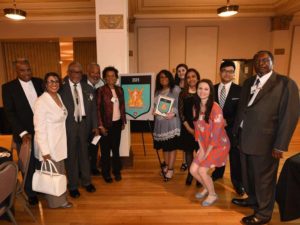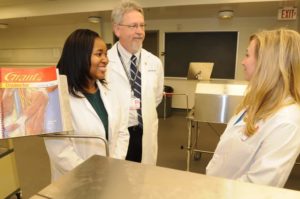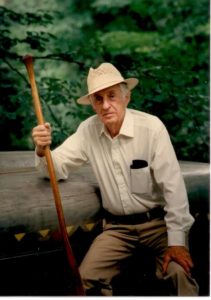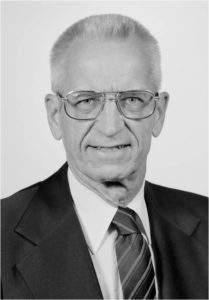UAMS College of Medicine students, faculty and leaders paid homage to the namesakes of the college’s seven Academic Houses at a recent dinner for family members of the iconic educators, alumni and other groundbreakers whose legacies live on through their impact on health care in Arkansas.
“It is an understatement to say that our Academic Houses are named after some of the giants in medicine in Arkansas,” Interim Dean Christopher T. Westfall, M.D., told guests at the May 17 dinner.

“Abernathy, Beall, Bruce, Compton, Ish, Lowe, and Tank …” he said, reciting the house names.
“With names like these, the Academic Houses are providing our students with powerful inspiration for the physicians that they – and all of us in the College of Medicine – hope they will become.”
Students echoed Westfall’s words of gratitude in presentations about each house and the namesakes (all deceased) that members chose for inspiration when the houses were launched two years ago. They gave family members or a representative a framed copy of their house’s student-designed crest and explained the symbolism they had incorporated.

“We chose a lion as our house symbol,” said Chase Wingfield, a junior in the house named after Betty Lowe, M.D., a 1956 UAMS graduate who became a nationally prominent pediatrician, transformative medical director at Arkansas Children’s Hospital (ACH), and beloved faculty member and mentor for generations of students, trainees and colleagues at UAMS and ACH.
“Just as Dr. Lowe was steadfast in her resolve to advance medicine in Arkansas, seeing that every child has not only an opportunity to receive health care, but also the most up-to-date, advanced treatments at their fingertips, we want to continue that resolve into the future,” Wingfield said.
The houses are structured learning communities, not physical residences. Each house includes students from all four class years along with specially trained physician and basic sciences faculty advisors. The houses provide extensive academic and career counseling, foster peer mentoring, and host wellness-focused events.

Many house activities focus on academic success and preparation for crucial milestones such as national exams and the increasingly competitive National Resident Matching Program, which determines where medical school graduates will train in their specialty before becoming fully licensed physicians. For the past two years, UAMS’ graduating seniors achieved their highest residency match rates in over a decade, and the academic houses are credited as a factor.
The dinner welcomed namesakes’ family members from around the country, including eight family members of the late George William Stanley Ish, M.D., a Harvard-trained African-American physician who cared for citizens in his hometown of Little Rock from the 1920s through 1960s. Among many accomplishments, Ish established hospitals and the state’s McRae Memorial Tuberculosis Sanatorium, which cared for black patients during the long era of segregated facilities. It was the first institution in Arkansas and one of the first in the nation to use isoniazid and streptomycin to treat the disease, according to the online Encyclopedia of Arkansas.

“We are proud and so happy that the college is honoring our grandfather,” said Marye Ish of Fort Washington, Maryland, who attended with her sister, Lynette Ish-Greene, of Novi, Michigan, and six other family members. “We can’t tell you how much that means to us. Even as children, we knew our grandfather was doing special work, even if we didn’t fully understand it.”
Emily Holthoff, a graduating senior and student leader in the Ish House, expressed gratitude to the family for expanding her understanding of Dr. Ish’s legacy while they enjoyed dinner together. She explained for other guests how the phoenix rising from ashes on her house’s crest represents renewal and overcoming adversity. “We felt like that is exactly what Dr. Ish did,” Holthoff said. “And that is something that we hope we can do as physicians throughout our careers. We hope to overcome the obstacles we face, for the betterment of our patients.”

Colleen Flanagan, a junior, spoke on behalf of the Tank House, whose namesake, Patrick W. Tank, Ph.D., helped more than 4,000 medical students learn the complexities of the human body during his 34 years on the faculty, including 27 as director of the gross anatomy course for freshmen. Tank died in 2012. Today, medical students at UAMS continue to be guided by “Grant’s Dissector,” a manual that was edited by Tank for three of its editions and is used at medical schools around the world. His name is also on UAMS’ state-of-the-art gross anatomy lab.
“The name Tank is most likely the first distinguished name a medical student learns upon starting at UAMS,” Flanagan said.

“Dr. Tank’s time at UAMS came before my classmates’ arrival. However, looking back at all of his accomplishments, three things are obvious. Dr. Tank devoted his life to his profession; his students cherished him; and UAMS would not be what it is today without Dr. Tank’s work.”
